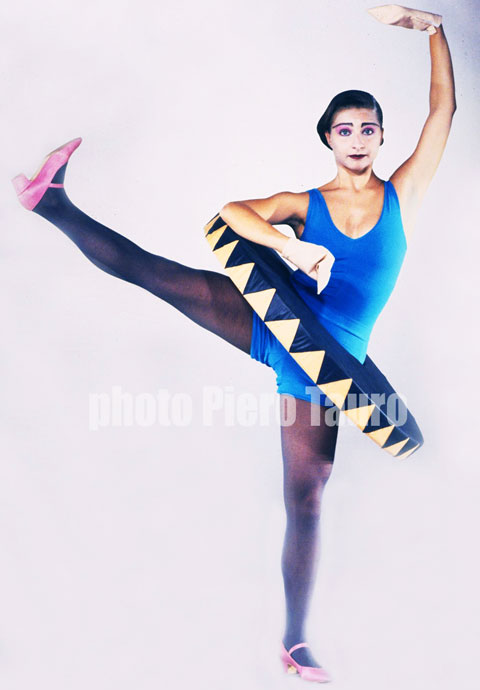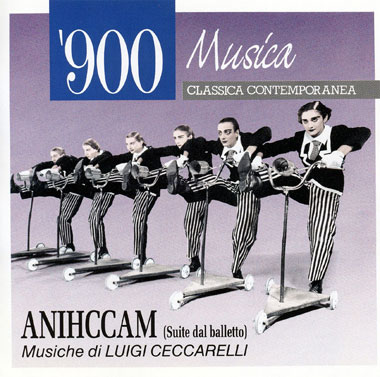
Luigi Ceccarelli
Anihccam
CD: BMG-Ariola CCD 3005
ballet suite
performers: Luigi Ceccarelli,
Maurizio Giri – electronics
total duration: 55′
1992
distributed by: www.ducalemusic.it
notes to the CD
Luigi Ceccarelli’s music does not fear contamination, on the contrary it makes it a matter of inspiration for the show.
Romagnolo, soon moved to Rome, ……. but convinced that the expressive supremacy still belongs to the sound generated by the instruments, for ten years Ceccarelli has been composing the music for Lucia Latour’s theater-dance shows. Or is it the choreography that creates the gestural and visual situations most suited to these sounds? “Anihccam” also arises from their collaboration. The title (machine written backwards) takes up the one chosen by Fortunato Depero for a “futurist evening” presented to the Milanese public in 1924. The work does not use the music of Depero (Fondo 1892-Rovereto 1960), too poor for our ears hyper-receptive of the end of the millennium. Instead, of advertising posters and his paintings, which give the title to the various movements that make up this suite …….
Ceccarelli does not reproduce, he transforms almost to the point of making the initial information unrecognizable: he starts with instrumental sounds, puts them in a sampler, entrusts Maurizio Giri with the task of creating a computerized program that uses the laws of cellular automata. These are dynamic systems capable of determining some sound parameters according to the information received, organizing the sequence of the notes independently, according to their own logic. This technique which produces not entirely predictable results seemed to the composer the most suitable for expressing the multiplicity of directions of the pictorial bribes by

Depero. “I have done nothing but take the futurist manifestos and apply them to the techniques of today’s music”, Ceccarelli specifies: the candor of the statement plays to hide the complexity of the creative work.
I had never heard a counterpoint interwoven with coughs and syllables (“Discussion of 3000”: is there anything else to say?), Or such an unscrupulous use of the accelerating technique, when (“Rubber devils”) the computer it forces the keyboard to reach speeds impossible for the most sprinter of pianists. But so far we remain circumscribed in a “poetics of effects”, while in “Anihccam” the theatricality of every musical choice persuades: in “Convegno d’automi” very reduced phonemes, butts of syllables (called by a polyphony of friends: Achille Perilli, Giorgio Battistelli, Fernando Mencherini, Francesco Fagioli) become the texts of a script, they fill the space of the scene and, on the record, of listening. Starting from a sound, or from a color and a figure and returning it in another way, part of a mosaic, of a path: impure music, therefore, by its choice inserted in a multimedia dimension and yet music that stands out for its originality8 of the compositional process and the ductility of the fields of application. Very amusing, for those who have the imagination and the pleasure, to try to investigate the graphic dimension of the succession of sounds (an operation not illegitimate, if from signs and colors, precisely Depero’s paintings, we started): the result is a center of attraction from which they escape and where infinite points of tension stretch, in a dense and luminous vortex. Really, the possible wonders of sound never run out.
Sandro Cappelletto, 1992
